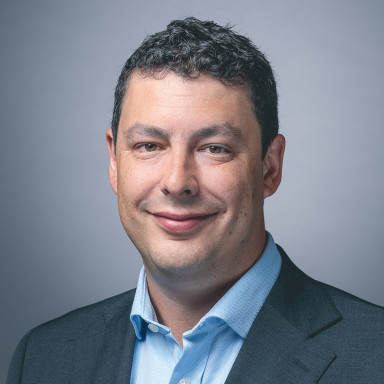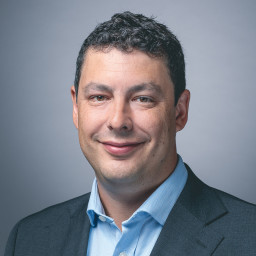- The experienced Real Return team implement their time-tested strategy on this fund, but with added emphasis on sustainability
- They're one of the best-resourced teams in the sector
- We think the fund could be a good consideration for a conservative portfolio, or bring diversification to a more adventurous one
- This fund is on our Wealth Shortlist of funds chosen by our analysts for their long-term performance potential
How it fits in a portfolio
The BNY Mellon Sustainable Real Return fund aims to reduce volatility by providing some shelter during market wobbles, while also delivering some long-term growth in a sustainable way, by investing in companies that comply with their in-house environmental, social and governance (ESG) criteria. This means it could be a good option for a more defensive portfolio seeking steadier gains, and those who wish to invest in Responsible funds. It could also be a useful addition to more adventurous portfolios focused on company shares, by giving exposure to other asset classes and adding some balance.
Manager
Matthew Brown and Philip Shucksmith have managed the fund since launch in April 2018. They're both experienced investors and have served on the Real Return team for well over a decade.
BNY Mellon's team-based investment process, however, is built on the principle that the whole is greater than the sum of its parts. The fund is managed with an investment approach that is heavily reliant upon the skills and experience of the wider Real Return investment team.
The team's built up a good track record over a long period of time with the BNY Mellon Real Return Fund, which has featured on the Wealth Shortlist (and formerly the Wealth 50 and 150) since December 2010. The team's experience and time-tested investment process gives us confidence they can deliver good returns in a sustainable way with this fund, although there are no guarantees.
Process
The team aims to make money in a variety of market conditions. They do this using a mix of assets that broadly fall into two camps. The first is called the 'return-seeking core'. It invests in assets the team think will provide long-term growth, such as shares and bonds issued by well-run, financially secure companies with a unique set of advantages over the competition. They also consider how well those companies manage their impact on the environment and society.
The rest of the fund is called the 'stabilising layer' and invests in government bonds, commodities and cash, with the aim to add stability to returns. The managers alter the amount invested in each section of the fund depending on their view of the world. The managers also use derivatives within the ‘stabilising layer’ which adds risk.
The team places more emphasis on not losing money than making it. If you lose less money in the bad times, you have less ground to make up in the good times. They use diversification, hedging (investing to potentially benefit in a range of outcomes), and liquidity (investing in things that are easy to buy and sell) to help achieve this, as well as derivatives. The team also has the flexibility to invest in high-yield bonds and emerging markets which, if used, adds further risk.
While the team tries not to lose money, the assets they invest in can go down in value. They measure their performance over the long-term (which is considered to be five years or longer) against SONIA (Sterling Overnight Index Average) + 4% per annum. SONIA is the rate of interest banks receive when they lend money to each other and is similar to the Bank of England base rate. While the fund aims for long-term growth, it still has the potential to lose value over some shorter time periods.
The fund's sustainable 'red lines' mean companies that violate the UN Global Compact Principles (a UN pact on human rights, labour, the environment and anti-corruption) and those incompatible with the aim of limiting global warming to 2°C are not considered for the fund. It also won't invest in companies that make more than 10% of their revenues from tobacco, alcohol, gambling and several other contentious industries. The team engages with the companies they invest in on a range of ESG issues and report on progress in their Responsible Investment Report (available on the BNY Mellon website).
The Responsible Investment team has power of veto over companies held in the BNY Mellon Sustainable Real Return Fund. This means the final decision is separated from the managers and helps provide an additional layer of challenge.
Over the past year, the managers have changed where the fund is invested. 2022 has been a difficult year for investors and the team think that this could continue into 2023. Because of their cautious outlook, they have tried to reduce the potential for further losses in the fund. At the end of 2021, around 80% of the fund was invested in the ‘return-seeking core’ – this was reduced to around 50% during 2022. Three quarters of this part of the fund is made up of shares. The rest includes corporate and emerging market bonds, as well as alternatives such as property, infrastructure, and commodities.
The stabilising layer currently makes up the remaining half of the fund, and this portion has also changed in line with the manager’s outlook. As government bond yields rose, the team increased investments here from zero at the end of 2021 to around 15% now. The team has also increased investments in precious metals and derivatives. The amount invested in cash and shares has reduced.
Culture
BNY Mellon is a large, US-based firm so the managers have a lot of resources at their disposal. Until mid-2019 they were part of the Newton brand, but even though the name has now changed to that of the parent company, the way the managers run the fund remains the same.
In September 2021, Mellon Investments merged its equity and multi-asset teams into Newton. So far this hasn’t directly affected the managers of this fund, although it has given them access to a larger pool of research analysts who could be of benefit.
We like that the fund managers are incentivised in a way that aligns their interests with those of long-term investors. However there have been some significant fund manager departures in recent years and we continue to monitor this situation closely.
ESG Integration
The team at BNY Mellon (formerly Newton) believes responsibly managed companies are better placed to achieve sustainable competitive advantage and provide strong long-term growth. They’ve invested a significant amount of time and resource into their Responsible Investment proposition in recent years, including the hire of Therese Niklasson, the firm’s Global Head of Sustainable Investment, who we have long held in high regard.
All fund managers have access to an ESG dashboard and an ESG Consensus Score tool, both of which are mostly fed by secondary sources of data.
This fund is one of a number of funds that the firm has launched in recent years which take ESG analysis further, with a bigger list of companies that are excluded due to poor ESG credentials.
Overall we think ESG risks are at the heart of this fund's process of choosing which investments to use.
Cost
This fund is available at an annual ongoing fund charge of 0.81%, making it more expensive than the BNY Mellon Real Return Fund, which has a net ongoing charge of 0.59% for HL clients. While a slightly higher charge is to be expected for the additional sustainability analysis that goes on within this fund, we think the charge is on the high side and investors should be mindful this sets a higher hurdle for the managers to deliver positive returns. The HL platform fee of up to 0.45% per year also applies.
Please note the fund's charges can be taken from capital. This increases the yield but reduces the potential for capital growth.
Performance
Since launch the fund hasn’t performed as well as its official benchmark, SONIA +4%, although it’s ahead of peers in the IA Targeted Absolute Return sector. This is a short time period and past performance is not a guide to the future. All funds will rise and fall in value, so you could get back less than you invest.
The fund performed well against its benchmark until 2022. Over the past 12 months, the fund has underperformed both its benchmark and peers. Many of the investments in the stabilising layer lost value at the same time as those in the return seeking section of the fund. In a period where shares, bonds and precious metals have all lost value, it has been difficult to shelter the fund from losses. Derivatives have helped to off-set the losses in the value of their shares, and some of their currency positioning has provided positive returns. But the bulk of their investments have lost value.
This is a very short period of time over which to judge returns though and past performance is not a guide to the future. Over the longer term we think the fund has the potential to beat its benchmark, although there are no guarantees.
| Annual percentage growth | |||||
|---|---|---|---|---|---|
| Oct 17 -
Oct 18 |
Oct 18 -
Oct 19 |
Oct 19 -
Oct 20 |
Oct 20 -
Oct 21 |
Oct 21 -
Oct 22 | |
| BNY Mellon Sustainable Real Return | N/A* | 11.65% | 4.72% | 12.30% | -13.13% |
| SONIA +4% p.a. | 4.52% | 4.71% | 4.30% | 4.05% | 4.92% |
| IA Targeted Absolute Return | -1.92% | 2.54% | 0.47% | 6.58% | -1.54% |
Past performance is not a guide to the future. Source: Lipper IM to 31/10/2022.
*Fund launched on 24 April 2018. Full year performance data prior to this date is unavailable.
Find out more about BNY Mellon Sustainable Real Return fund including charges
BNY Mellon Sustainable Real Return Key investor information
Want our latest research sent direct to your inbox?
Our expert research team provide regular updates on a wide range of funds.

